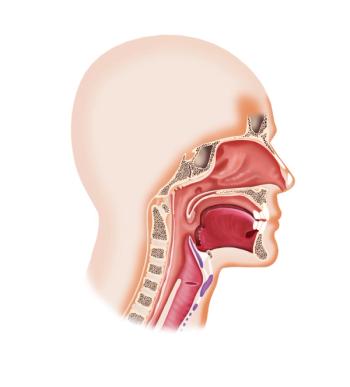
Oncology NEWS International
- Oncology NEWS International Vol 16 No 3
- Volume 16
- Issue 3
Cetuximab + Weekly CRT Promising in Advanced H&N Ca
Cetuximab (Erbitux) plus concurrent chemoradiotherapy (CRT) appears to be feasible and effective in many patients with locally advanced squamous-cell head and neck cancer, and may improve local-regional control
RANCHO MIRAGE, CaliforniaCetuximab (Erbitux) plus concurrent chemoradiotherapy (CRT) appears to be feasible and effective in many patients with locally advanced squamous-cell head and neck cancer, and may improve local-regional control, Mohan Suntharalingam, MD, and colleagues said at the 2007 Multidisciplinary Head and Neck Cancer Symposium (abstract 5).
Dr. Suntharalingam, of the University of Maryland Medical Center, Baltimore, reported preliminary data from a phase II trial that will enroll about 60 patients. To date, 21 patients have entered the study, and 18 have completed treatment and were available for toxicity and response analysis. All had locally advanced disease (30% T4, 95% N2-3). Mean follow-up time was about 10 months after completion of therapy.
Patients were treated with cetuximab at a loading dose of 400 mg/m2 followed by 250 mg/m2 weekly. Chemotherapy consisted of weekly doses of paclitaxel 40 mg/m2 and carboplatin to AUC 2. Patients also received radiotherapy at 1.8 Gy/d to a total of 70.2 Gy.
All patients completed planned radiotherapy, and 66% received all planned doses of cetuximab. There were no grade 4 toxicities, but grade 3 toxicities included mucositis (89%), infield skin desquamation (11%), dysphagia (17%), fever (11%), and leukopenia (17%).
Dr. Suntharalingam told ONI that the main new toxicity observed with the regimen was rash associated with cetuximab. Rash is currently treated with antibiotic ointment and Benadryl (diphenhydramine) cream, with special attention to skin problems that appear within the radiation field.
Cetuximab-Associated Fever
Fever was the most common reason patients were hospitalized in the early months of the trial. The researchers soon realized that the fever was associated with cetuximab and rarely indicated other problems, such as infection.
"The most common reasons for hospitalization have been fever and dehydration," Dr. Suntharalingam said. Currently, patients are hospitalized less quickly for fever, since the cetuximab-related fevers typically resolve without intervention, and patients are being counseled on ways to prevent dehydration.
Overall, the toxicity results were encouraging, Dr. Suntharalingam said. All patients received full radiation doses, with only 2 days of delay, and 17 of 24 patients had no delays in radiotherapy. Thirteen of 24 patients received full doses of cetuximab, and 8 patients missed only one dose. Eleven of 24 patients received all planned doses of chemotherapy, and 10 patients had only one cycle held or reduced in dose. "We found a significant ability to deliver treatment as planned," Dr. Suntharalingam said.
He reported that 72% of patients achieved a complete response 2 months after completing therapy, and four more were rendered disease-free after neck dissection. "Ultimately, 95% were free of disease after all therapy," he said. One patient died of progressive disease, and two developed metastases without evidence of local failure.
"Longer follow-up is needed to see whether the improved local control translates into improved survival," he said. "In head and neck cancer, we don't get excited until we see 2-year long-term outcomes." Nonetheless, he found the initial evaluation of the toxicity and efficacy of this regimen encouraging. He told ONI that the research team hopes to convince a cooperative group to undertake a phase III trial comparing cetuximab/chemoradiotherapy to standard care (currently cisplatin/radiotherapy in the cooperative group setting, although weekly paclitaxel/carboplatin/radiotherapy is widely used in the community).
Articles in this issue
almost 19 years ago
Peptide-Based Breast Ca Vaccines Promising in Early Trialsalmost 19 years ago
Diagnostic Dilemma: GI Diseasealmost 19 years ago
Imatinib Responses in CML May Take Timealmost 19 years ago
IV Vidaza Approved; Oral Formulation to Be Testedalmost 19 years ago
Study Confirms Avastin Advantage in Advanced NSCLCalmost 19 years ago
Legal Services Should Be a Component of Standard Cancer Carealmost 19 years ago
Mouse Virus Evidence Suggests Viral Basis for Breast Caalmost 19 years ago
Groups Oppose Ruling on Access to Experimental Drugsalmost 19 years ago
Satellite Allows Digital Mammography Screening for Rural Native Americansalmost 19 years ago
Nexavar Effective in Advanced HCC: Phase III Trial StoppedNewsletter
Stay up to date on recent advances in the multidisciplinary approach to cancer.





